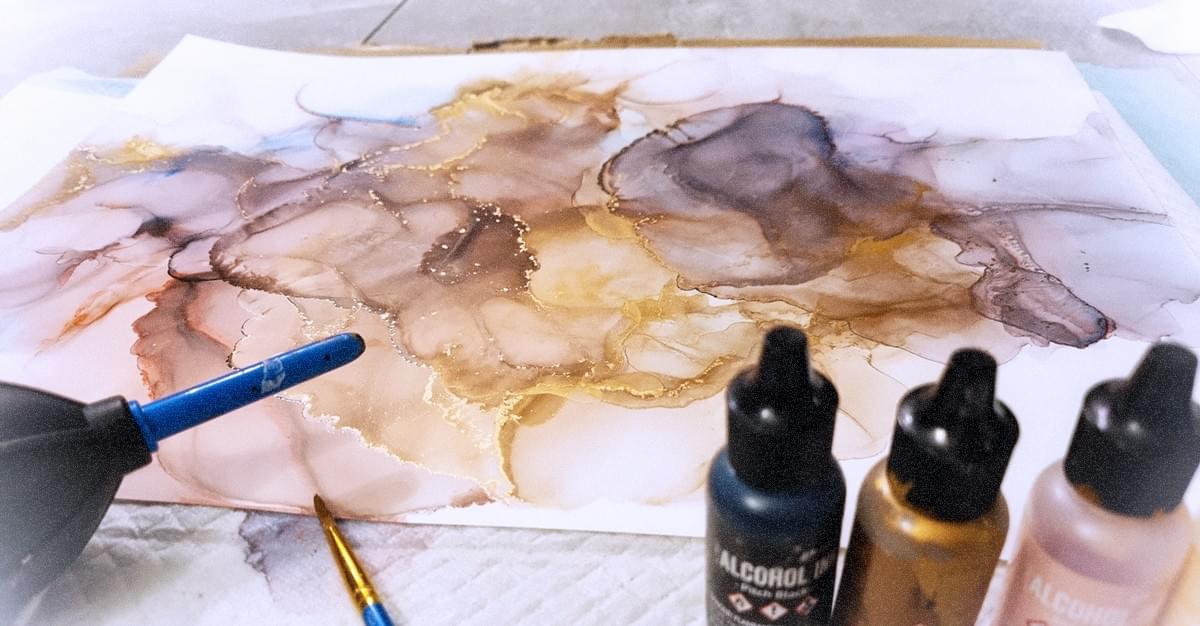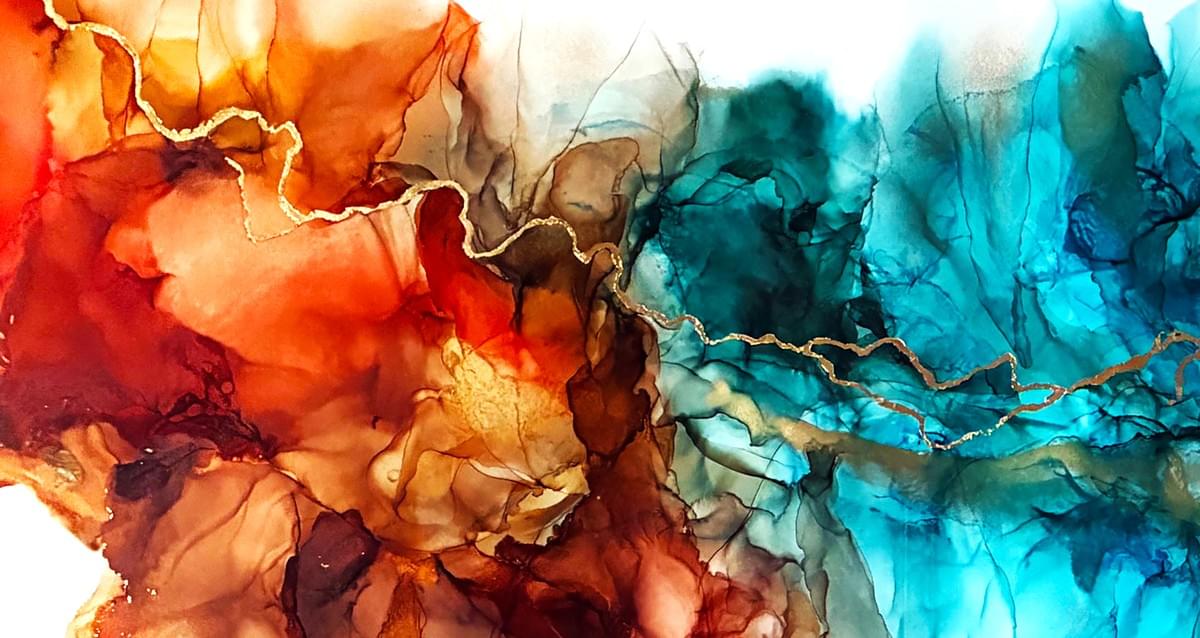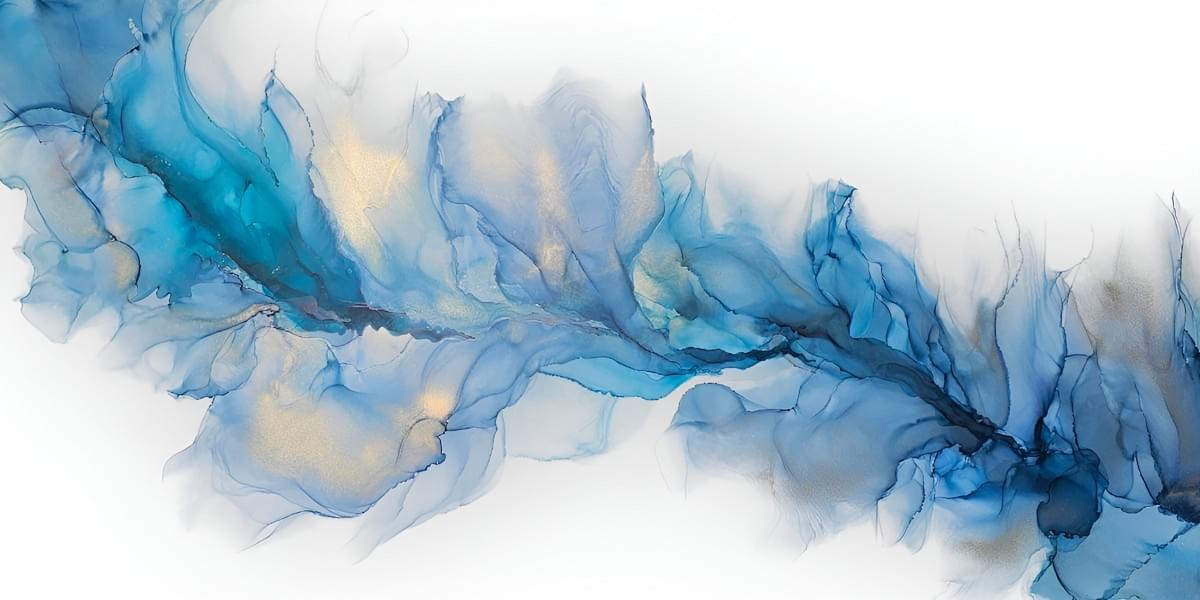A Mindful Journey into Alcohol Ink Painting & Abstract Art Creation
A Mindful Journey into Alcohol Ink Painting & Abstract Art Creation
My Guide to Alcohol Ink Abstract Art - Part 1

Original Alcohol Ink Abstract Art - A Guide by Artist Andrea Dell : Art in progress by Andrea Dell
This page forms part of a series of Andrea Dell's bite-sized guides on alcohol ink art, in which you will discover the captivating world of the abstract art medium. This has been created for both buyers looking to understand more about Andrea Dell's paintings as well as artists seeking to explore the alcohol ink medium further.
- Introduction: Unveiling the Vibrant World of Alcohol Ink Art
- About Abstract Art: The Mesmerising Flow of Alcohol Inks
- The Essential Toolkit: Materials and Supplies for Alcohol Ink Artistry
- Unleashing Creativity: Mastering Alcohol Ink Art Techniques
- Beyond the Brush: Exploring Styles and Themes in Alcohol Ink Abstract Art
- Nurturing Your Masterpiece: Safety, Sealing, and Preserving Alcohol InkArt
- Frequently Asked Questions About Alcohol Ink Abstract Art
In this section you will learn about what alcohol inks are and how the medium offers a truly dynamic way to express yourself, captivating with its intense pigments and unique, fluid movements.
Introduction : Unveiling the Vibrant World of Alcohol Ink Art
I remember first seeing art that just seemed to flow, burst with colour and life – and that is the magic of alcohol ink art to me. It is a truly dynamic and exciting way to create. Another allure of alcohol ink art is its vibrancy of colours and unique properties. The inks are highly pigmented dyes suspended in alcohol, making them thin and fast drying. Unlike water-based paints, they do not mix with water, which is key to their special effects on non-porous surfaces.
The way alcohol inks move and blend unpredictably creates mesmerising abstract compositions, fluid movements, and organic shapes. This makes them a favourite for artists who love spontaneity and bold colours. The inherent unpredictability of alcohol inks is not a drawback; rather, it is a defining
characteristic that artists embrace. This medium encourages a playful approach, where unexpected outcomes often lead to unique and beautiful results. Mastery in this art form is not about rigid control, but about learning to guide the chaos, transforming what might seem like imperfections into distinctive beauty.
In this guide, I will explore everything from the basic tools needed to advanced techniques, safety tips, and how to make your alcohol ink abstract art last. All images shown are my own ... Ready to dive in?

Abstract Art: The Mesmerising Flow of Alcohol Inks
What Exactly Are Alcohol Inks?
Alcohol inks are highly pigmented, dye-based colours, meaning they are very bright and transparent. They are much thinner than regular paints like acrylics or oils. This thinness, combined with their alcohol base, allows them to flow smoothly and dry incredibly fast as the alcohol evaporates. Imagine how quickly nail polish dries; alcohol inks work in a similar speedy fashion.
DID YOU KNOW ? Once dry, artists can reactivate their paintings with more alcohol, letting them move the colours around again, just like watercolours with water. This property is fantastic for layering and creating depth. This unique ability to reactivate offers artists a remarkable "undo" or "rework" capability, a significant advantage over many other fast-drying mediums. This allows for more experimentation without the fear of "ruining" a piece. This feature makes alcohol ink art more accessible and forgiving, fostering a playful approach. It also enables complex layering and transformations, leading to deeper, richer abstract art pieces that evolve over time.
Why Alcohol Inks Are Perfect for Abstract Art
Their fluid nature and fast drying times make them ideal for creating vibrant, transparent layers and intricate patterns. Artists can achieve effects that resemble marbling or tie-dye, with areas of varying pigmentation, creating a ‘watery’ feel. They they react with alcohol-based solvents creates stunning textures, blends, and organic patterns. This natural movement is why they lend themselves so well to abstract art and fluid art forms.Think of them as liquid jewels, ready to dance across the page.
The Science Behind the Swirls
The alcohol in the ink acts as a solvent, allowing the dye to spread and blend. As the alcohol evaporates, the dye is left behind, creating those unique patterns. Adding more alcohol or blending solution can dilute the pigment, creating lighter tones and fascinating effects like white circles.
The uniqueness of each alcohol ink art piece stems critically from the relationship between the pigment, the alcohol, and the surface used. The dye's transparency and pigment load, combined with alcohol's evaporative and reactive properties, require a non-porous surface. This ensures the ink flows and blends on top, rather than soaking in, like traditional paint on paper. This relationship explains precisely why the unique fluid effects occur. Understanding this fundamental interplay is crucial for artists to intentionally manipulate the medium, moving beyond random drops to truly mastering the art form technique and achieve specific abstract art visions. It empowers artists to predict and guide the
flow, transforming simple materials into complex visual storytelling.


